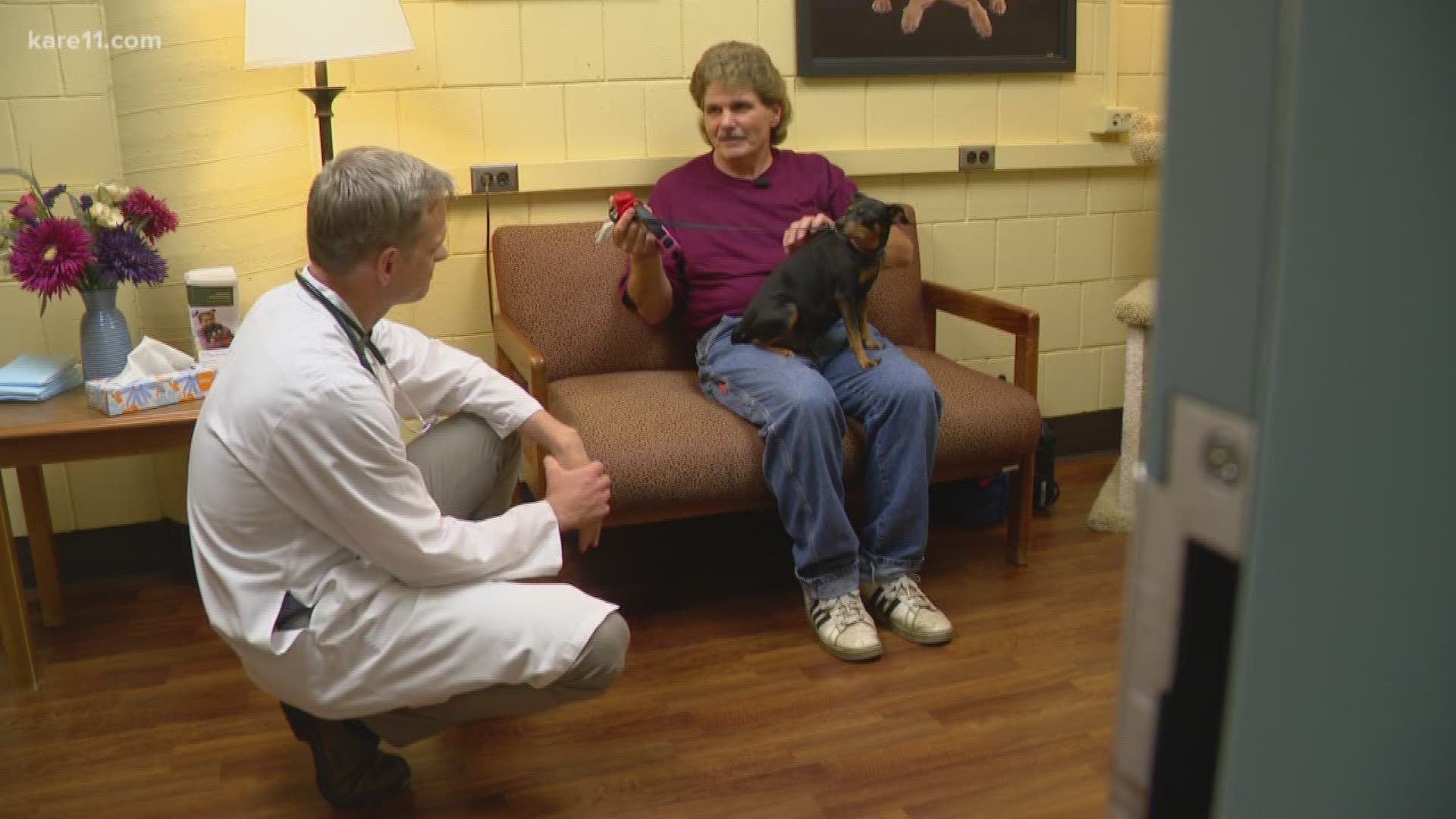The University of Minnesota is pioneering a new way to treat a rare heart defect in dogs, and it's already giving new life to several beloved pets.
From the time she was a puppy, Maggie, a miniature pinscher, struggled to stay active, but she underwent a transformation two weeks ago.
"She has what is known as cor triatriatum dexter," said Dr. Christopher Stauthammer, with the University of Minnesota College of Veterinary Medicine. "She has an extra chamber in her heart."
For years, that defect prevented blood from moving easily through her heart, and led to a massive fluid buildup elsewhere.
"It was like she had a baseball or a softball on her belly. It was hard," said Maggie's owner, Gary Belmonte. "She would get sluggish and she wouldn't want to play."
For dogs like Maggie that usually means a shorter life span because open heart surgery is too risky and can cost upwards of $20,000, meaning it's often unaffordable. But now a team of specialists at the University of Minnesota College of Veterinary Medicine are trying something different.
Dr. Stauthammer and his team inserted a stent into Maggie's heart that acts as a bridge between the chambers, allowing for increased blood flow.
"You'll see it kind of swirls and then goes right across the stent," Stauthammer said.
Maggie is one of five dogs that have had the procedure at the University of Minnesota, and now vets across the country are looking to replicate it.
Because a catheter is used to insert the stent, the recovery process and cost are both greatly reduced.
"Our patients wake up, they go home the following day. The recover time is almost instantaneous," Stauthammer said. "For the procedure to be done here, it's about $3,000."
For Maggie, the cost was reduced even more because her stent was donated by the University of Minnesota Medical School. The Pediatric Cardiologist Group and Interventional Radiology Department are interested to see if the procedure could one day help humans born with the same rare defect.
"If we can avoid open heart surgery or delay the need for open heart surgery in a little infant that would be a great thing," Stauthammer said.
It's already a great thing for Maggie and her family.
"She's much more active, much happier," Belmonte said. "For them to do something like this, it's just amazing, and I can't thank (the doctors) enough."

